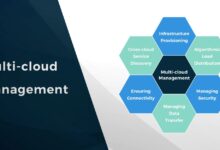Cloud Data Management: 15 Powerful Strategies for 2024
Managing data in the cloud isn’t just a trend—it’s a necessity. In this guide, we’ll explore everything you need to know about cloud data management in 2024, from strategy to security.
1. Understanding Cloud Data Management

Cloud data management refers to the processes, policies, and technologies used to store, access, and secure data in cloud environments. It’s a critical component of modern IT infrastructure, enabling scalability, flexibility, and cost-efficiency.
1.1 Definition and Scope
Cloud data management encompasses a wide array of practices including data storage, backup, disaster recovery, data integration, and data governance. It supports both structured and unstructured data across hybrid and multi-cloud environments.
1.2 Importance in Modern Business
With data volumes growing exponentially, businesses require efficient and scalable solutions. Cloud data management offers:
- On-demand scalability
- Improved disaster recovery
- Enhanced collaboration
- Reduced infrastructure costs
“Data is the new oil, and cloud is the refinery.” — Anonymous
1.3 Evolution of Cloud Data Systems
Initially focused on storage, cloud systems have evolved to include AI-powered analytics, real-time processing, and automated compliance tools.
2. Core Components of Cloud Data Management
Cloud data management includes several core components that work together to ensure data availability, security, and usability.
2.1 Data Storage
Cloud storage solutions such as Amazon S3, Google Cloud Storage, and Microsoft Azure Blob Storage provide scalable and redundant storage options.
2.2 Data Integration
Tools like Talend, Informatica, and Apache NiFi help integrate data from various sources into a unified view for analytics and reporting.
2.3 Data Governance
Governance ensures data quality, consistency, and compliance. It involves metadata management, lineage tracking, and access control.
3. Cloud Data Architecture Models
Choosing the right architecture is essential for effective cloud data management.
3.1 Centralized vs Decentralized
Centralized models streamline control but may create bottlenecks. Decentralized models offer flexibility but require robust synchronization mechanisms.
3.2 Hybrid Cloud
Combines on-premise and cloud resources. Ideal for organizations with regulatory or latency-sensitive workloads.
3.3 Multi-Cloud
Utilizes services from multiple cloud providers to avoid vendor lock-in and enhance resilience.
4. Security and Compliance in Cloud Data Management
Security is a top concern. Organizations must ensure data is protected from breaches, loss, and unauthorized access.
4.1 Data Encryption
Encrypt data at rest and in transit using industry-standard protocols like AES-256 and TLS 1.3.
4.2 Identity and Access Management (IAM)
Use role-based access control (RBAC) and multi-factor authentication (MFA) to enforce data access policies.
4.3 Regulatory Compliance
Ensure adherence to regulations such as:
- GDPR (EU)
- CCPA (California)
- HIPAA (Healthcare)
“Compliance is not a checkbox—it’s a journey.” — Gartner
5. Data Lifecycle Management
Managing data throughout its lifecycle ensures optimal performance and compliance.
5.1 Data Retention Policies
Define how long data should be stored based on business and legal requirements.
5.2 Archiving and Deletion
Move inactive data to long-term storage or delete it securely when no longer needed.
5.3 Backup and Disaster Recovery
Implement automated backup solutions and test recovery processes regularly.
6. Tools and Platforms for Cloud Data Management
There are numerous tools available to support cloud data management across different functions.
6.1 Data Management Platforms
Examples include:
- Snowflake
- Databricks
- Google BigQuery
6.2 Monitoring and Optimization Tools
Use tools like CloudWatch, Datadog, and New Relic for real-time monitoring and performance optimization.
6.3 Automation and Orchestration
Leverage tools like Apache Airflow and Kubernetes for workflow automation and resource orchestration.
7. Best Practices and Future Trends
Staying ahead requires adopting best practices and preparing for emerging trends.
7.1 Best Practices
- Implement Zero Trust Architecture
- Use infrastructure as code (IaC)
- Regularly audit and optimize storage
7.2 AI and Machine Learning
AI is being used to automate data classification, anomaly detection, and predictive analytics.
7.3 Edge and Serverless Computing
These models reduce latency and improve scalability for data-intensive workloads.
What is cloud data management?
Cloud data management involves storing, securing, and analyzing data using cloud platforms and services.
Why is cloud data management important?
It enables scalability, cost-efficiency, and better data accessibility across the organization.
What are the main challenges in cloud data management?
Security, compliance, data integration, and vendor lock-in are common challenges.
Which tools are best for cloud data management?
Popular tools include Snowflake, Databricks, Google BigQuery, and Talend.
How do I secure my cloud data?
Use encryption, IAM policies, regular audits, and ensure compliance with industry standards.
Cloud data management is a transformative force in the digital era. By understanding its components, challenges, and best practices, businesses can harness data as a strategic asset and drive innovation with confidence.
Recommended for you 👇
Further Reading:









